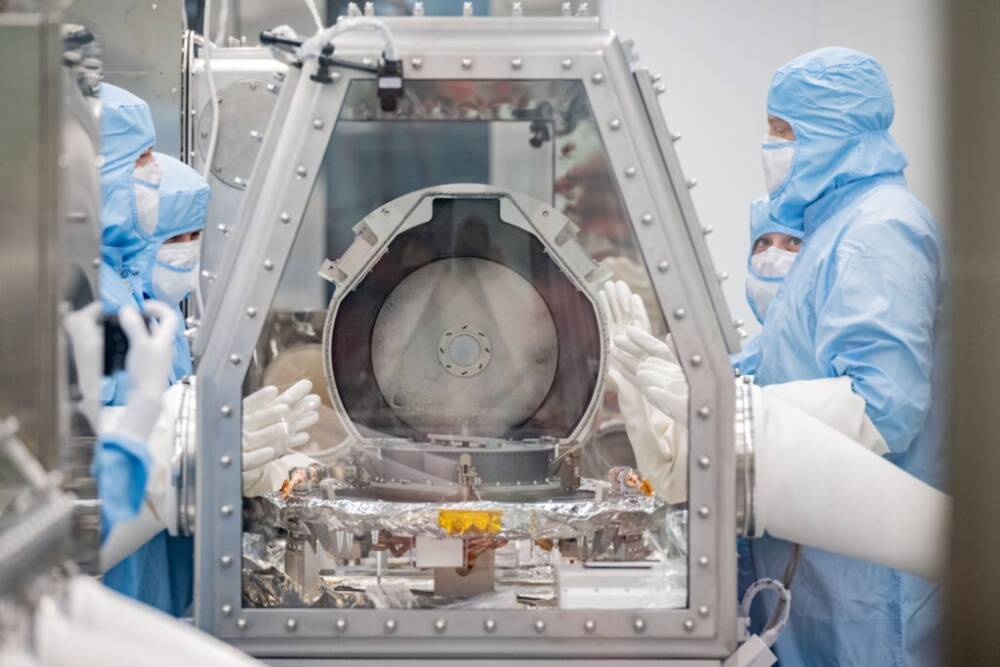And now something fun for a change: Building blocks of life in Bennu asteroid samples – The Register

Scientists analyzing samples from asteroid Bennu have found something remarkable: Despite being a cold, lifeless rubble pile that formed around 65 million years ago, it holds a rich inventory of organic molecules – key ingredients for life.Returned to Earth by the OSIRIS-REx spacecraft in late 2023 – and sealed inside its capsule until NASA worked out how to safely open it – the first two scientific papers detailing the makeup of organic matter (Nature Astronomy) and hydrated salts (Nature) harvested from the surface of Bennu were published Wednesday. While no signs of life were found, the results provide valuable insights into the chemistry of the early solar system.The Nature Astronomy paper reports that Bennu contains 14 of the 20 amino acids essential for life on Earth, along with all five nucleobases that form DNA and RNA. The samples also included ammonia and formaldehyde, which can combine to form complex molecules like the amino acids found in the sample, indicating multiple stages of development being present. Along with those compounds, around 10,000 nitrogen-bearing chemicals were found in the Bennu samples. Like amino acids and nucleobases, nitrogen-bearing compounds play a critical role in life.All those organic compounds need a proper environment to develop in, and Bennu shows evidence of containing that, too. The Nature paper found evidence of evaporated brine minerals, suggesting that Bennu’s parent body – a larger proto-planet or asteroid – once contained liquid water and compounds critical to life, including sodium-bearing phosphates and carbonates, as well as sulfates, chlorides, and fluorides.Similar brines, the paper’s authors said, are likely still present on Ceres and Enceladus, where subsurface oceans are believed to exist. While some of the compounds found in the Bennu samples have been found in meteorites, both papers point to the unprecedented detail OSIRIS-REx’s pristine samples were able to provide because they were retrieved from space, returned in an air-tight container and never subject to the ravages of Earth. “Discovery of diverse salts would not be possible without mission sample return and careful curation and storage, because these decompose with prolonged exposure to Earth’s atmosphere,” the authors of the Nature paper wrote. As for the organic compounds, exposure to Earth’s environment alters or degrades them, making it harder to trace their origins in the early solar system.”The clues we’re looking for are so minuscule and so easily destroyed or altered from exposure to Earth’s environment,” Danny Glavin, NASA Goddard senior sample scientist and co-lead author on the Nature Astronomy paper, said. “That’s why some of these new discoveries would not be possible without a sample-return mission, meticulous contamination-control measures, and careful curation and storage of this precious material from Bennu.” Bennu, described in the Nature paper as a relatively young rubble pile at about 65 million years old, formed from the debris of a larger parent asteroid. Despite its recent assembly, its material dates back to the early solar system, offering a chemical snapshot of planetary formation and the origins of life on Earth.”Primitive asteroids—those whose bulk chemistry was established in the protoplanetary disk—record processes that occurred during the formation and evolution of the early Solar System,” per the Nature Astronomy paper. Bennu is considered a primitive asteroid, meaning its chemical makeup is a fingerprint of the early solar system – an ideal source of data on how it developed. The material that makes up Bennu, OSIRIS-REx project scientist and co-lead author on the Nature Astronomy paper Jason Dworkin told The Register, never melted and differentiated, so despite Bennu’s youth, it’s made up of some seriously old stuff. “The transport and delivery of organic compounds from [primitive asteroids] could have been a source of molecules available for the emergence of life on Earth and potentially elsewhere,” the authors of the Nature Astronomy paper said. In other words, Bennu’s samples provide further evidence that life’s building blocks formed early in the solar system and could have been transported to Mars, other planets, moons, or asteroids capable of supporting prebiotic chemistry. It was reported this week there’s strong evidence of liquid water, not just frozen ice, on the Red Planet.Not only does Bennu’s makeup suggest life’s building blocks formed early, but it also suggests they may be more common throughout the solar system than previously thought.”[Asteroids like Bennu] were in the outer solar system and migrated inward,” Dworkin explained. “They would have done [so] at the time of the origin of life on Earth, or elsewhere as well.” This might be the first look at what sort of surprises Bennu has in store for us, but more remains to be discovered. According to Nature Astronomy, one of the mysteries of the Bennu samples lies in the chirality of the amino acids they contain. Terrestrial life relies almost entirely on left-handed amino acids, but those found in Bennu exhibit no such bias, suggesting they formed through non-biological processes.Whether future studies of Bennu samples will resolve that mystery remains to be seen, but rest assured: These findings are just the first of many that’ll help us further understand the early solar system and the formation of life. “Numerous studies are ongoing and several [have been] submitted for publication,” Dworkin told us. “Samples will be preserved for decades, including one frozen at -80°C that will not be opened for 49 years. There is much more to come.” ®Send us newsThe Register Biting the hand that feeds IT
Copyright. All rights reserved © 1998–2025
Source: https://www.theregister.com/2025/01/30/asteroid_bennu_life/






